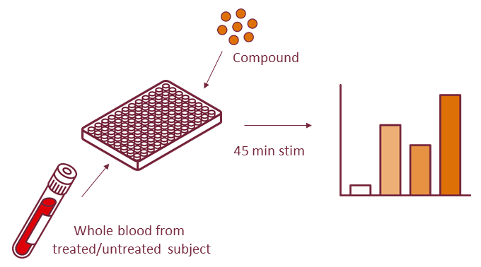
Whole blood complement activation assay
The complement system is an integral part of host defense against invading pathogens. Assessing the effect of your (immunomodulatory) compound on complement activation can provide valuable insights into in vivo effects.
At Sanquin, we are uniquely equipped to perform complement activation assays. By making use of in house hirudin-coated blood collection tubes and our capacity to perform testing rapidly after blood withdrawal, we can perform complement activation assays under near physio-chemical conditions.

Typically, complement activation is assessed by whole blood culture with your compound of interest, and can provide important information on potential toxicity. Complement activation is then assessed by measuring C3a-des-Arg and C5a-des-Arg (C3 and C5 activation products) via ELISA.
Advantages of the whole blood complement activation assay
-
By using hirudin as an anti-coagulant, complement activation can still be assessed
-
Depending on your wishes, 500 µl of whole blood per donor/subject is sufficient for read-out
-
High-throughput measurement of many samples possible
- Can be combined with other whole blood assays, i.e. to assess basophil, B cell, or total immune cell activation
Example of how Sanquin can contribute to your complement-related projects
Assessing complement activation in response to an immunomodulatory compound in a whole blood assay
Hirudinized blood was collected from healthy donors (n=3). Whole blood was cultured together with immunostimulatory compounds for 45 minutes. Serum was collected and complement activation was assessed by ELISA (by measuring C3a-des-Arg and C5a-des-Arg).
Our other whole blood assays
By using whole blood, interactions between different cell types and serum components can still occur, reflecting the in vivo situation.


